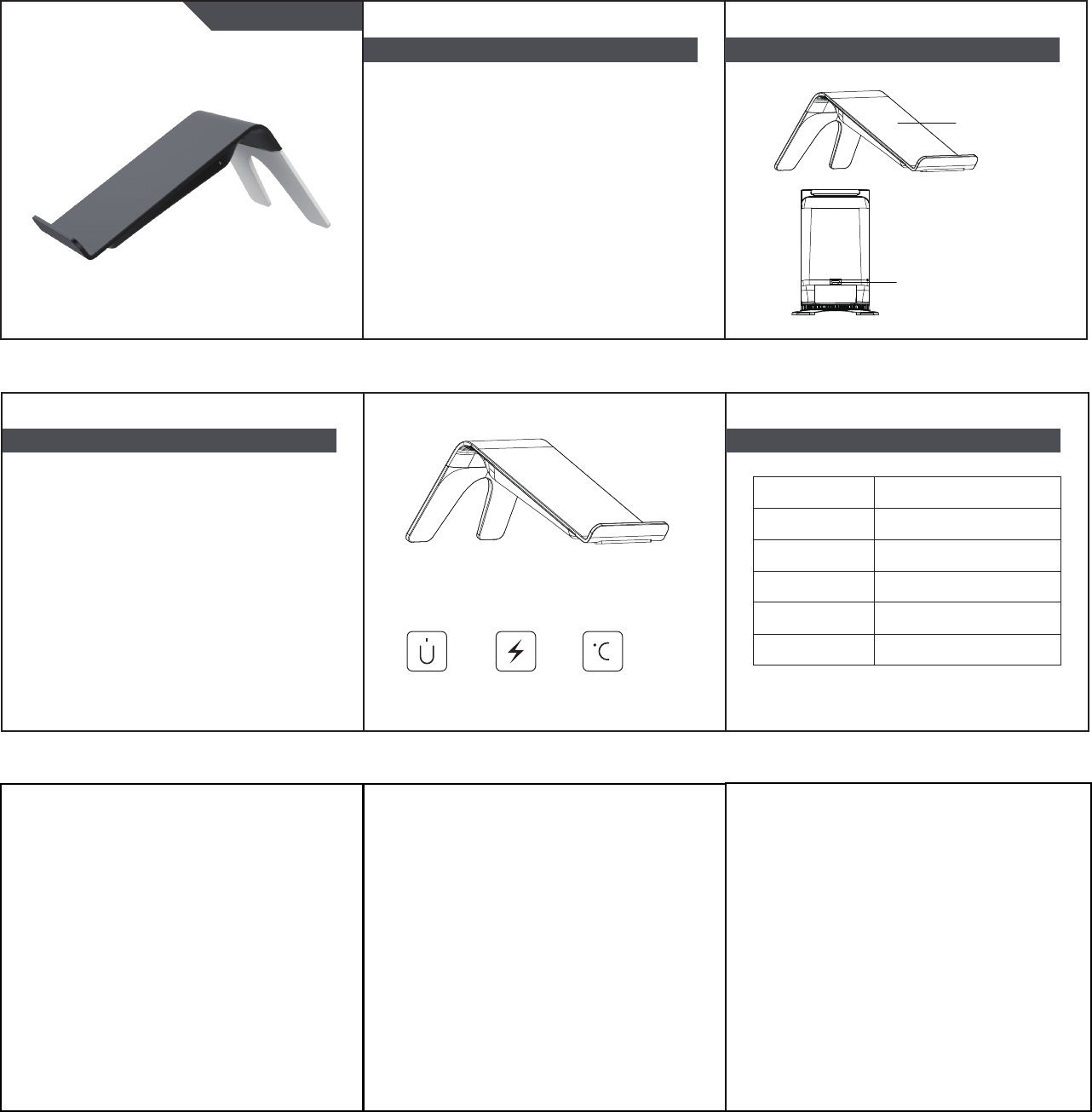CJ Global 72794 Wireless charger User Manual TYV 1713
CJ Global Inc. Wireless charger TYV 1713
User Manual

undesired operation.
CHARGING INSTRUCTION
1. Insert the AC end of the adapter into the socket, and
then insert the other end into the charger. The red
LED on the charger will flash, indicang that the
device is ready to charge.
2. Place the mobile phone in the corresponding
posion on the charger and keep it in good
condion.
3.When the phone is charging,the blue light keeps on.
The blue light turns off for Samsung when the phone
is fully charged.for Iphone,the blue light keeps on
4. When a device that does not have a wireless
charging funcon is placed on the wireless charger,
red light flashes. Note This device cannot be
wirelessly charged.
SAFETY INSTRUCTION
1.Do not expose Charger to high temperature/light/
Strong magnec field, or other environment like fire.
2.If the device gets wet, please dry it off before further
using.
3.Please don’t place any other baeries or metals on
the charger when it is power on.
1. Cable
2. Wireless charger
3. User manual
User Manual
72794
wireless charger
GENERAL INTRODUCTION
Input
Output
Dimensions
Weight
Efficiency
5V/2A
5V/1A
15.7*8.9*6.4cm
71g
≥ 75%
Charging Distance ≤ 8mm
PRODUCT COMPONENTS
Micro USB Interface
Wireless Charger
Aera
PROTECTION
Over-current Over-voltage Over-heang
IDENTIFICATION OF PARTS
FCC Statement
Changes or modifications not expressly approved by
the party responsible for compliance could void the
user's authority to operate the equipment.
This equipment has been tested and found to comply
with the limits for a Class B digital device, pursuant
to Part 15 of the FCC Rules. These limits are
designed to provide reasonable protection against
harmful interference in a residential installation. This
equipment generates uses and can radiate radio
frequency energy and, if not installed and used
in accordance with the instructions, may cause harmful
interference to radio communications. However, there
is no guarantee that interference will not occur in a
particular installation. If this equipment does cause harmful
interference to radio or television reception, which can
be determined by turning the equipment off and on, the
user is encouraged to try to correct the interference by
one or more of the following measures:
-- Reorient or relocate the receiving antenna.
-- Increase the separation between the equipment and receiver.
-- Connect the equipment into an outlet on a circuit different
from that to which the receiver is connected.
-- Consult the dealer or an experienced radio/TV technician
for help
This device complies with part 15 of the FCC rules. Operation
is subject to the following two conditions (1)this device may
not cause harmful interference, and (2) this device must accept
any interference received, including interference that may cause
IC Statement
This device complies with Industry Canada’s licence-exempt RSSs.
Operation is subject to the following two conditions:
(1) This device may not cause interference; and
(2) This device must accept any interference, including interference
that may cause undesired operation of the device.
The term “IC: “ before the certification/registration number only
signifies that the Industry Canada technical specifications were
met. This product meets the applicable Industry Canada technical
specifications.
Le présent appareil est conforme aux CNR d'Industrie Canada
applicable aux appareils radio exempts de licence. L'exploitation
est autorisée aux deux conditions suivantes : (1) l'appareil ne doit
pas produire de brouillage,et (2) l'utilisateur de l'appareil doit
accepter tout brouillage radioélectrique subi, même si le brouillage
est susceptible d'en compromettre le fonctionnement